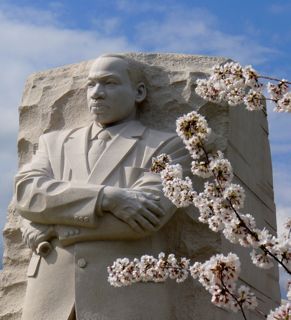Liberating Leadership
As a leader do you wish that people around you would speak up more? Does resistance to change in your organization frustrate you? Do you feel that there is too much complaining and not enough positive action? Do you aspire to tap into the collective intelligence of not only your management team but of your entire organization?
Liberating Structures make it easy for leaders to include everyone in shaping the decisions that affect them.
Liberating Structures create spaces for all contributions to emerge and be taken into consideration. Because LS are easy to use, including everyone can become a routine practice that invites people to participate and contribute on a daily basis. When this is the case “inclusive leadership” can become the norm. See how LS Principles guide more inclusivity.
Inclusive leadership inevitably reveals hidden leaders, those whose voices would otherwise never be heard. These new leaders strengthen the organization and likely will help others emerge. They are the source of fresh ideas and new connections.
Inclusive leadership liberates formal leaders from the burden of being constantly “in command."
Moaning, bitching and objections become inputs that are included in shaping decisions instead of generating resistance-to-change after the fact. (See Henri’s article Buy-in v. Ownership) This greatly cuts down the time that is otherwise spent managing the side effects of top-down decisions, time that can now be spent on more rewarding and strategic roles.
Inclusive leadership leads to increased innovation by permitting all voices to be heard and by constantly creating spaces for creative conversations to emerge spontaneously. Inclusive leadership creates ideal conditions for more collaboration and hence for the emergence of more innovation.
A leader who routinely uses Liberating Structures inevitably becomes a role model. Others start using them and act in an inclusive manner within their own sphere of influence.
On the often-neglected emotional level inclusive leadership has a dramatic impact on quality of life and thus motivation. To put it very simply, people who work together using Liberating Structures “have a good time”; they are energized, they feel included and they have fun. Put it another way they find pleasure in working.
How well a management group performs as a team inevitably creates repercussions through all levels below it. Management meetings at each level become the learning space and the role model for management meetings at the next level.
Hence, fostering teamwork for all management teams starting at the CEO level should be a critical activity. Though this is well recognized, in reality on a day-to-day basis, it is frequently a totally neglected activity.
This in good part explains frequent team dysfunctions since teamwork is first and foremost a practice that can and must be learned regardless of the personalities and talents involved.
Some basic principles are the same for all contexts from sport teams to management teams. There is no magic involved; learning requires commitment and regular practice – the more frequent the better and the smaller the bites the easier to make progress -- plus unvarnished feedback at every opportunity.
The articles and stories below describe how LS are helping to transform leadership.
Liberating Management Teams or A Macrostructure for Management Meetings to Foster Teamwork and Inclusiveness Henri Lipmanowicz
Business Turnaround: From Lagging To Leading the Industry Alison Joslyn
Academic Leadership from the Inside Out Dr. Diane Magrane
Straight Up Business: You Are the Setter, Not the Spiker Neil McCarthy
The Sky Is Falling, Or Is It? A Strategic Planning Self Assessment (2003) Keith McCandless
Surprise & Serendipity At Work: Managing the Unknowable Future (2002) Jim Smith, Keith McCandless

